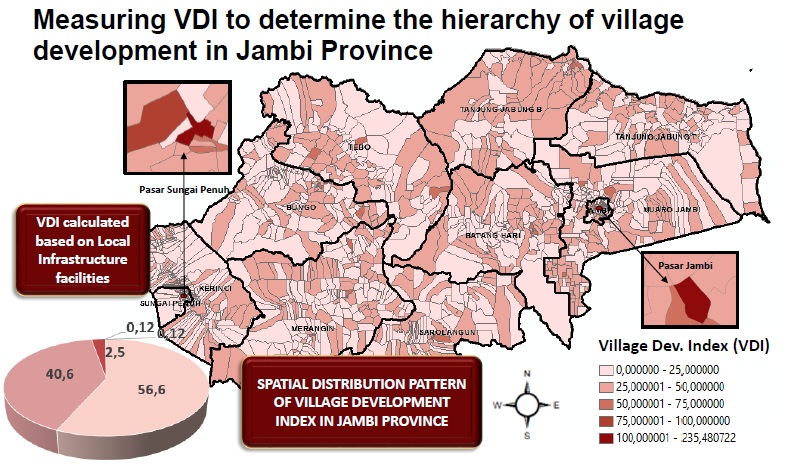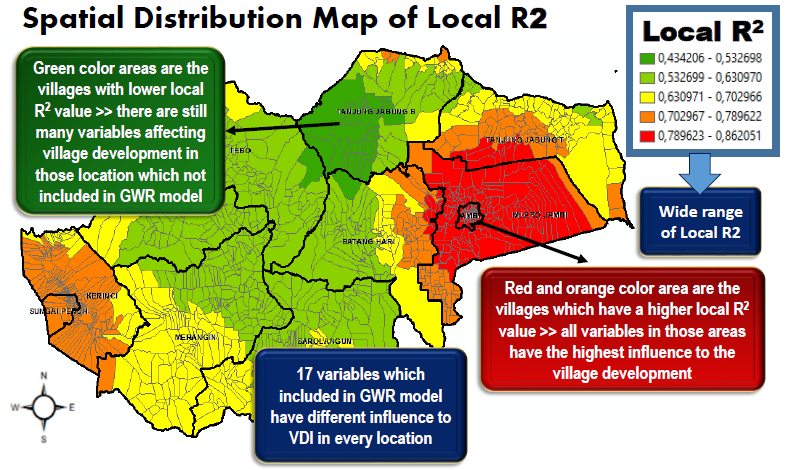
The Rural Research and Planning Group (RRPG) menyelenggarakan 9th RRPG International Conference yang diselenggarakan pada tanggal 5-7 Juli 2018. Konferensi Internasional ini dilaksanakan di Universitas Mahasaraswati Denpasar, Bali dengan tema “Asian Rural Sustainable Development: promoting Spiritual, Culture Values and Local Practices”. Pusat Pengkajian Perencanaan dan Pengembangan Wilayah (P4W)-LPPM IPB bekerja sama dengan Kyoto University dan Universitas Jambi ikut berpartisipasi dalam kegiatan konferensi internasional tersebut dengan memaparkan paper hasil penelitian terkait subtema Innovation Toward Village and City Development dengan judul “Identifying Local Spatially Dependent Driving Factors of Village Development in Jambi Province”. Paper tersebut ditulis oleh Dr. Andrea Emma Pravitasari; Dr. Ernan Rustiadi; Dr. Jane Singer; Setyardi Pratika Mulya, S.P., M.Si; dan Lutfia Nursetya Fuadina, S.P.
Village is the smallest unit of administrative boundaries in Indonesia. There are more than 74,000 villages in our country with various characteristics. One way that can be used to determine the hierarchy of village development is by analyzing the village development index (VDI). The objectives of this study are to calculate VDI and to identify spatial variations in the relationship between VDI and its driving factors in every location. In this study, Jambi Province was selected as the research location. There are 1543 villages in Jambi. The VDI in this study were determined by considering the number of facilities/infrastructure and the accessibility to access those facilities. Villages with higher VDI are more developed rather than other villages. To identify the driving factors of village development, 62 variables from PODES and spatial data were included in the Ordinary Least Square (OLS) model.

